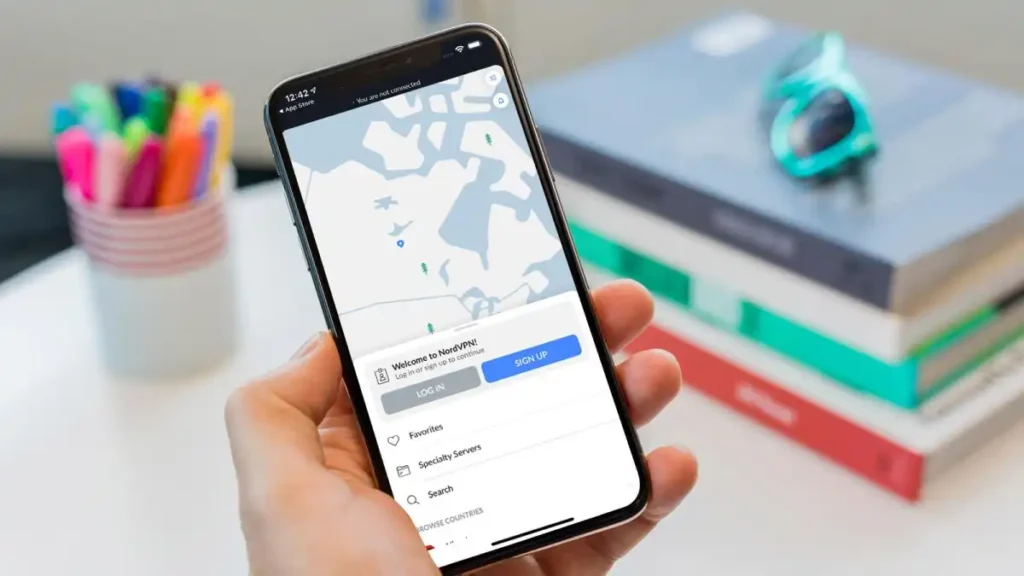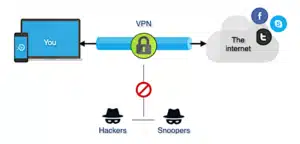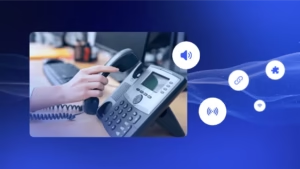How to Use a VPN? A Complete How-to Guide

What is a VPN and Why Do You Need It? And How to Use a VPN?
A Virtual Private Network (VPN) is a technology that allows you to create a secure connection to internet, it helps you hide your information from others while you are connected to internet. A VPN hides your IP address and hence if used to access the internet it will prevent hackers, government agencies and even advertisers from getting your information.
Such cases make the use of VPN very important especially when using the public Wi-Fi connections since they are easily hacked. Besides, VPNs assist in getting around the limitations in a particular region and get content unavailable in that region. Be it security concerns, personal web activity or just freedom of web browsing, a VPN is a utility snoops for the average internet user.
Selection of Bonus VPN Services
Choosing the right VPN service provider depends on your needs to use it, for example, privacy, speed, compatibility among others. To begin with, one should assess the provider’s level of encryption; the geographical location of the servers and the extent to which the provider logs the consumer’s activity.
Make sure that you get a VPN service that doesn’t log to avoid your information being recorded. Internet connection times and speed or bandwidth conveys the capacity of streaming and gamin. Another factor also includes compatibility with different devices, ease to use and good customer relations. You can read some feedback and try trial versions of software to check its performance. Stick with the reputable VPN providers of good track records that have clear policies when it comes to security.
Aspects to Consider When Selecting a VPN
When selecting a VPN provider, look for protocols to include AES-256 encryption, no-collection of your traffic logs and kill switch that will sever your internet connection in the event that your VPN connection drops. Many places for servers are possible, and this will help with better speed and access to content from other areas.
Also, seek for the compatibility of the devices for it works with and look for it with simultaneous connectivity. Extra notes that can be brought up include enhanced flexibility by features such as split tunneling, where some of your traffic goes through the VPN while other traffic remains local traffic. Also, the VPN should include DNS leak protection and around- the-clock customer service to ensure safe and comfortably using the VPN.
Free vs. Paid VPNs: Which Should You Choose?
There is nothing wrong with wanting a freebie, especially when it comes to VPN service, but it is essential to know that free VPNs have limitations: bandwidth limits, a limited number of servers, and slower connection speeds. They also may violate user privacy by collecting logs and selling customer data. However, paid VPNs have numerous features; advanced security often with a higher level of encryption, no logs policies, and unlimited bandwidth among others.
Services to be paid also come with enhanced customer support and added value service delivery. Free VPNs are just fine when used occasionally but paid VPNs are more suited for consistently safe use, streaming, and professional purposes. This way you need to define your usage requirements in order to choose which one of the options is more suitable for your case.
VPN Setup: Getting it Done on Various Devices
apparatus, connecting a VPN is not a complicated task though each apparatus requires different steps to follow. First, find VPN service for your chosen platform. App is an application to be downloaded directly from the providers` internet site or application stores. Once you are done with your installation, enter login details, choose a server and proceed with connecting.
Configuration settings may vary depending on what device is being used but generally there is always information which will guide the user on the next step in installing any app. This is especially important when installing on PCs, the portable devices, and the routers to allow users to browse in privacy.
How to Install a VPN on Windows and Mac
To install a VPN on Windows or Mac, copy the VPN software from your VPN provider’s official website. Start the installer and go through the steps indicated in the setup process step-by-step. After the installation, open the software and enter the login details.Click on a server to connect depending on your requirement such as a fast connection server or a specific location for breaking geographic restrictions.
Click on the “Connect” button to maintain a secure connection with the page. Many VPN apps have a very simple layout and using it one can easily change something simple like protocol type or enable the kill switch option.
Configuring a VPN on Mobile Operating Systems iOS and Android
It is easy to install a VPN on mobile devices. Obtain the VPN app: VPN app is readily available at the App Store by Apple for iOS and Google Play Store for Android. Start the application and enter your profile login information. Permissions that may be provided include the permission to create a VPN profile.
Select the preferred server and pressed on ‘Connect’ option to turn on the VPN. If not, then connection is made manually; to do this, go to settings, add VPN, and then input the servers from the VPN provider. Make sure that your VPN application is up to date both in terms of efficiency and security on any mobile operating system.
Configuring a VPN on Routers
Connecting a VPN to your router as opposed to individual devices makes all your network secure and safe to use. Make sure your router supports VPN firmware and also supports such firmware as DD-WRT or Tomato. Type the router’s IP address on a web browser to get the router’s settings and then go to VPN configuration.
Enter the server details given below by your VPN service provider. Make them and then reset the routers. And every piece of equipment that is connected to the network will automatically connect to the VPN when it is set up this way. This arrangement is best for smart TVs, gaming consoles and any IoT device that lacks a VPN application support.
How to Use a VPN: Step-by-Step Guide
It is very easy to use VPN and anyone can easily connect it with few clicks. First, launch the VPN app on your device and sign in. Then select an appropriate server to use for your task, whether it be a local server that provides high speed or a server from another country if you wish to unblock content from that specific country.
To make a secure connection, please click “Connect”. Some other security features should also be activated for example the kill switch. When connected, your Internet traffic will be secure and your IP address hidden. Frequency of updates of the app as well as constant checking of the connection quality for a perfect use.
Common VPN Settings and How to Optimize Them
VPN applications allow various settings to be made in order to improve the usage and protection. Use OpenVPN for a balance between performance and security or WireGuard for the fastest connection or IKEv2 for consistent connection. The kill switch should be allowed in order to secure the information if the connection is lost. Selective routing also known as split tunneling allows specific traffic to be routed through the VPN.
Tweak servers by what you are doing on your device, this includes streaming or gaming among others. The kill switch makes certain that no data leaks occur when the VPN connection is off. Here, you can try different settings in order to define the combinations that fit your requirements the most.
Solving Some VPN Problems
VPN complications are quite frequent and, most of the time, they are easy to solve. If there’s a problem with connection speed, one can switch between the servers or protocols. For unsuccessful matches, make sure your application is out, or look through your Firewall or antivirus program.
In most cases, DNS leaks can be avoided simply by enabling DNS leak protection. If the VPN does not work with some websites, try cleaning up your browser cache or choosing the option that has obfuscation. Contact the support team in the case of recurrent difficulties. Security against technical problems and a reliable connection require constant maintenance and updates for the software.
How to Protect and Be Incognito while Using a VPN
VPN provide privacy but not anonymous since one cannot be completely anonymous in today’s society. This can be done alongside the use of VPN in order to enhance the safety of the internet browsing procedures. Never disclose any of your personal details on such websites and also start using HTTPS where ever possible.
To reduce tracking clear cookies and browser history often is recommended. Select a VPN with great encryption and no logging policy. Make the kill switch and the DNS leak protection consist a list of features for its usage. Finally, to achieve the highest levels of anonymity, connect a VPN with privacy -oriented software such as Tor. By keeping alert you make sure that your activity on the internet is confidential and safe.
Some Guidelines for Getting the Most from Your Current VPN
In order to get the most out of a VPN, consider picking servers in your geographical area for faster connection. Always update your VPN app because it is the only way you can get the app version that gives you new features and perhaps new layers of security. The configuration of the split tunneling enables one to effectively control the bandwidths since only the specific traffic on the VPN is directed by the program.
Use VPN at times when browsing will require usage of such activities such as torrent or when accessing content that is restricted in certain geographic locations. Make sure that even routers are set up to have the VPN for optimum network protection. This is important if your VPN plan has limitations on the amount of data that can be used particularly in a certain period of time. That way, you can be sure that you are making the best of your VPN service, by implementing the following practices.
Legal and Ethical Implication of using VPN
VPN themselves are legal in most jurisdictions but you cannot use VPNs for unlawful purposes that disregard laws and professional/ethical codes. Do not go for forbidden material or participate in things that are bad for others. Several nations have banned or limited the use of VPNs and thus, it is recommended to do a legal research before using a VPN.
Maladministration of VPNs attracts certain punishments or legal consequences. It means observing the copyright rules, not using unauthorized access, and not to jeopardise the safety of the digital activity. VPNs should be utilized as a security and privacy instrument as well as the means to free access with respecting the legal and ethical norms.
Conclusion
A VPN is a means of improving anonymity, protection, and access to resources when using the internet. Fortunately, by enclosing with the right VPN service, tuning some settings, and adhering to recommendations, you can obtain the excellent result.
Be it on issues to do with secure connection of the computer to the internet, or browsing sensitive information from a public Wi-Fi, a VPN makes the user knowledgeable and strong while browsing the internet. Knowing its characteristic, installation procedures and some of the ethical issues requires a right VPN to enhance its usage. Take advantage of the ever-present force of a VPN to protect oneself in the connected world we live in.







